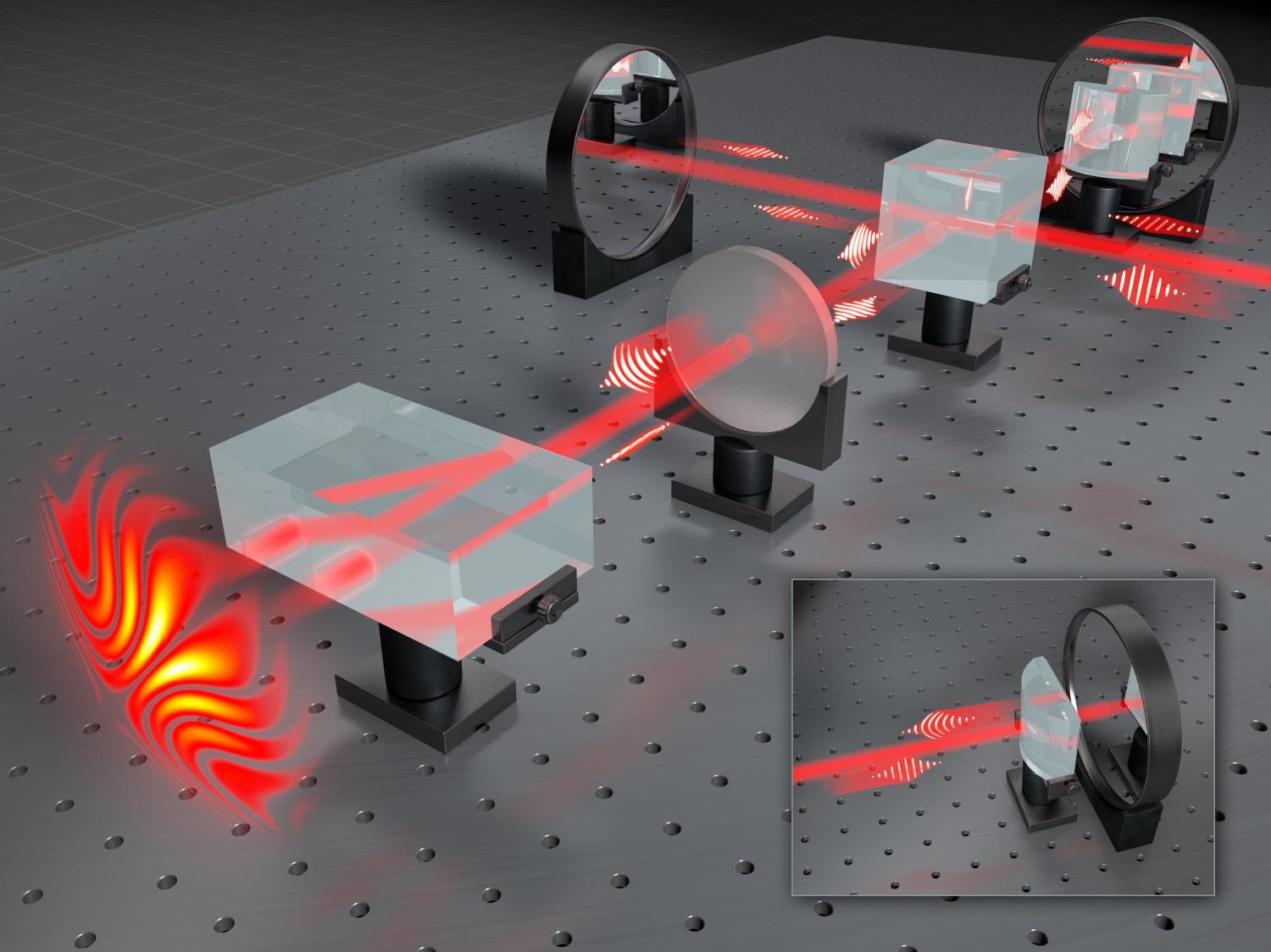Archive for the ‘particle physics’ category: Page 513
Jul 21, 2016
Unconventional quasiparticles predicted in conventional crystals
Posted by Karen Hurst in categories: particle physics, quantum physics
Another reason why we must look at all avenues of progress in Quantum. This particular discovery enriches many areas of material enrichment, QC (communications and information processing), etc. Limiting QC to only alerts from Google or maybe 1 other vendor is truly a mistake.
An international team of researchers has predicted the existence of several previously unknown types of quantum particles in materials. The particles — which belong to the class of particles known as fermions — can be distinguished by several intrinsic properties, such as their responses to applied magnetic and electric fields. In several cases, fermions in the interior of the material show their presence on the surface via the appearance of electron states called Fermi arcs, which link the different types of fermion states in the material’s bulk.
The research, published online this week in the journal Science, was conducted by a team at Princeton University in collaboration with researchers at the Donostia International Physics Center (DIPC) in Spain and the Max Planck Institute for Chemical Physics of Solids in Germany. The investigators propose that many of the materials hosting the new types of fermions are “protected metals,” which are metals that do not allow, in most circumstances, an insulating state to develop. This research represents the newest avenue in the physics of “topological materials,” an area of science that has already fundamentally changed the way researchers see and interpret states of matter.
The team at Princeton included Barry Bradlyn and Jennifer Cano, both associate research scholars at the Princeton Center for Theoretical Science; Zhijun Wang, a postdoctoral research associate in the Department of Physics, Robert Cava, the Russell Wellman Moore Professor of Chemistry; and B. Andrei Bernevig, associate professor of physics. The research team also included Maia Vergniory, a postdoctoral research fellow at DIPC, and Claudia Felser, a professor of physics and chemistry and director of the Max Planck Institute for Chemical Physics of Solids.
Jul 20, 2016
Atom-scale storage holds 62TB in a square inch
Posted by Shailesh Prasad in categories: computing, mobile phones, particle physics

Storage tech doesn’t get much better than this. Scientists at TU Delft have developed a technique that uses chlorine atom positions as data bits, letting the team fit 1KB of information into an area just 100 nanometers wide. That may not sound like much, but it amounts to a whopping 62.5TB per square inch — about 500 times denser than the best hard drives. The scientists coded their data by using a scanning tunneling microscope to shuffle the chlorine atoms around a surface of copper atoms, creating data blocks where QR code -style markers indicate both their location and whether or not they’re in good condition.
Not surprisingly, the technology isn’t quite ready for prime time. At the moment, this storage only works in extremely clean conditions, and then only in extreme cold (77 kelvin, or −321F). However, the approach can easily scale to large data sizes, even if the copper is flawed. Researchers suspect that it’s just a matter of time before their storage works in normal conditions. If and when it does, you could see gigantic capacities even in the smallest devices you own — your phone could hold dozens of terabytes in a single chip.
Continue reading “Atom-scale storage holds 62TB in a square inch” »
Jul 20, 2016
Thermal Separation of Complex Polymers
Posted by Karen Hurst in categories: materials, particle physics
The Postnova TF2000 is an advanced thermal field flow fractionation (TF3) system that provides a highly efficient method of separating and characterising complex polymer samples such as natural or synthetic rubbers, starches and paints from approximately 10 kDa up to 100 MDa and more in organic and aqueous solvents.

The TF2000 uses a temperature gradient as the driving force for its separation of polymers and particles. Molecules affected by the thermal gradient undergo diffusion which enables separation by both their molar mass and chemical composition. This unique feature allows the separation of different materials having the same molar mass. The separation can be further optimized by the use of different eluents and various temperature programs.
Jul 19, 2016
World’s Smallest Hard Drive Writes Data Atom-By-Atom
Posted by Karen Hurst in categories: computing, nanotechnology, particle physics
Meet the world’s smallest hard drive.
Dutch scientists have developed a unique solution to deal with the data storage problem. By manipulating single atoms, researchers have created the world’s smallest hard drive capable of storing 1 kilobyte of data (8000 bits) in a space under 100 nanometers across. The technology means that all the books in the world could be stored on a device the size of a postage stamp.
In a study published Monday in the journal Nature Nanotechnology, scientists from the Technical University of Delft (TU Delft) said that they have created an atomic hard drive with a storage density that is 500 times greater than current hard drive technology.
Continue reading “World’s Smallest Hard Drive Writes Data Atom-By-Atom” »
Jul 19, 2016
Weird quantum effects travel over hundreds of miles
Posted by Karen Hurst in categories: particle physics, quantum physics

I shared this yesterday; however, another article with another spin (no pun intended)
Working at the Massachusetts Institute of Technology’s (MIT) Fermilab physics laboratory in Illinois, a team of physicists studied the states of neutrinos, among the smallest components of an atom.
Continue reading “Weird quantum effects travel over hundreds of miles” »
Jul 19, 2016
Atomic data storage is still way off from practicality — 500 Terabits per square inch at −196˚C in a vacuum chamber
Posted by Klaus Baldauf in categories: computing, particle physics

Every day, modern society creates more than a billion gigabytes of new data. To store all this data, it is increasingly important that each single bit occupies as little space as possible. A team of scientists at the Kavli Institute of Nanoscience at Delft University managed to bring this reduction to the ultimate limit: they built a memory of 1 kilobyte (8,000 bits), where each bit is represented by the position of one single chlorine atom.
“In theory, this storage density would allow all books ever created by humans to be written on a single post stamp”, says lead-scientist Sander Otte.
Jul 18, 2016
Weird quantum effects stretch across hundreds of miles
Posted by Karen Hurst in categories: particle physics, quantum physics
Interesting study occurring on subatomic particles (aka neutrinos) in how they can be in superposition, without individual identities, when traveling hundreds of miles.
Now, MIT physicists have found that subatomic particles called neutrinos can be in superposition, without individual identities, when traveling hundreds of miles. Their results, to be published later this month in Physical Review Letters, represent the longest distance over which quantum mechanics has been tested to date.
A subatomic journey across state lines
Continue reading “Weird quantum effects stretch across hundreds of miles” »
Jul 18, 2016
The birth of quantum holography: Making holograms of single light particles!
Posted by Andreas Matt in categories: particle physics, quantum physics
Until quite recently, creating a hologram of a single photon was believed to be impossible due to fundamental laws of physics. However, scientists at the Faculty of Physics, University of Warsaw, have successfully applied concepts of classical holography to the world of quantum phenomena. A new measurement technique has enabled them to register the first ever hologram of a single light particle, thereby shedding new light on the foundations of quantum mechanics.
Scientists at the Faculty of Physics, University of Warsaw, have created the first ever hologram of a single light particle. The spectacular experiment, reported in the journal Nature Photonics, was conducted by Dr. Radoslaw Chrapkiewicz and Michal Jachura under the supervision of Dr. Wojciech Wasilewski and Prof. Konrad Banaszek. Their successful registering of the hologram of a single photon heralds a new era in holography: quantum holography, which promises to offer a whole new perspective on quantum phenomena.
“We performed a relatively simple experiment to measure and view something incredibly difficult to observe: the shape of wavefronts of a single photon,” says Dr. Chrapkiewicz.
Continue reading “The birth of quantum holography: Making holograms of single light particles!” »
Jul 18, 2016
New Technique Developed for Effective Dye Removal and Low-Cost Water Purification
Posted by Karen Hurst in categories: biotech/medical, nanotechnology, particle physics
Purifying H2O more cheaply.
WASHINGTON—(BUSINESS WIRE)—Organic compounds in wastewater, such as dyes and pigments in industry effluents, are toxic or have lethal effect on aquatic living and humans. Increasing evidence has shown that the organic contaminants discharged from electroplating, textile production, cosmetics, pharmaceuticals are the main reasons for the higher morbidity rates of kidney, liver, and bladder cancers, etc. Organic contaminants, especially methyl blue and methyl orange, are stable to light, heat or oxidizing agents and very difficult to remove by conventional chemical or biological wastewater treatment techniques. Recently scientists have developed some new strategies with good dye-removal performance; however, a subsequent adsorbent purification procedure is unavoidable after water treatment, which are often complicated and not suitable for practical water treatment.
Now, using laser-induced fabrication technique, a team of Chinese researchers from Shandong University, China, have developed a novel dye adsorbent. Hybrid nano-particles of silver and silver sulfide (Ag2S@Ag hybrid nano-particles) have demonstrated the nanomaterial’s superior adsorption performance for removing methyl blue and methyl orange from wastewater. More importantly, the new adsorbents can be removed directly from solutions by filters without adsorbent purification procedures, as the silver-based hybrid nano-particles will be agglomerated and deposited on the bottom after adsorbing dyes, providing a green, simple, rapid and low-cost solution for water purification. This week in the journal Optical Materials Express, from The Optical Society (OSA), the researchers describe the work.











